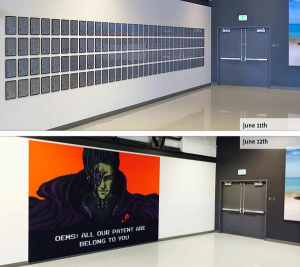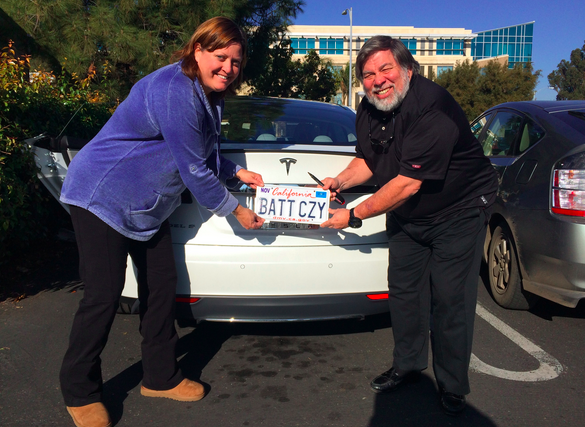aNewDomain — The Tesla Model 3 reminds me a lot of the original Apple Macintosh.
I mean, they have a lot in common. They’re both derivative products for one thing. Just as the Tesla Model 3 isn’t the first electric car, the Mac wasn’t the first computer with a graphical user interface. Workstations like the Apple Lisa and, before that, the Xerox Star, had GUIs years prior, but those computers were expensive, niche products.
 The Mac was able to change everything, partly, because it arrived in 1984, just as technology had improved to a point that GUIs could run quickly and well on less-expensive hardware.
The Mac was able to change everything, partly, because it arrived in 1984, just as technology had improved to a point that GUIs could run quickly and well on less-expensive hardware.
That’s why the Mac, with its proprietary hardware and software, was the only GUI game in town until Microsoft brought out Windows 3.0 and 3.11 in 1988.
Like the Mac, the Tesla 3 is arriving at exactly the right time. (Pictured above: Apple co-founder Steve Wozniak and wife Janet Wozniak with their Tesla Model S in November 2015.)
Electric cars, including other super-pricey models from Tesla, were around before the Tesla Model 3. But they were too expensive and too inconvenient. But now, battery, materials and other technologies are ready to enable the $35,000 Tesla Model 3 that can appeal to the mainstream.
And the mainstream is sure to love it. Its sensors, safety features, comfort, size and increased battery capacity, coupled with more charging stations and home chargers, will appeal to a wide market. And its ability to be upgraded via software download will appeal to a wide tech and mainstream market, which includes owners of gasoline-powered cars.
 The transition away from gasoline will take longer than the transition from command lines to GUIs took, mostly because of the longer replacement cycle for cars.
The transition away from gasoline will take longer than the transition from command lines to GUIs took, mostly because of the longer replacement cycle for cars.
No question about it: The tipping point has been reached.
There are financial parallels, too. Just as Apple bankrolled the Mac with sales of its Apple ][, so did Tesla bankroll its new Model 3 from sales of its Roadster and Model S and Model X vehicles.
In both cases, the earlier products and the companies themselves were in danger of fading on the release of Apple’s and Tesla’s flagship gen three products.
And then there’s the comprehensive proprietary designs both companies embrace. In a move most considered to be controversial and, in fact, ended up a source of strife between Apple co-founder and inventor Steve Wozniak and his partner Steve Jobs, Apple built proprietary hardware and software for the Mac. Tesla, similarly, has decided to not just make the car. It is making the batteries, too.
The similarities screech to a sudden halt right there, though.
Apple holds on to their hardware and software innovations, protecting them with patents and lawsuits. Not Tesla. On June 12th, 2014 Tesla released all of its 249 patents, pledging not to sue anyone who used their designs in good faith.
On a wall where its patent grants used to hang, there’s now a sign hanging inside Tesla headquarters, announcing that the firm’s patents now belong to original equipment manufacters (OEMs).
I think Yoda wrote the broken English sentence for them, but never mind. The point is that Tesla is opening up its technologies to an OEM market, something Apple never did.

And this is entirely to Tesla’s credit. Unlike Jobs, who fought bitterly with Wozniak and won, back in the early 1980s to make the Mac proprietary, Elon Musk’s firm is viewing OEMs as collaborators in his quest to fire up an electronic car revolution.
For aNewDomain, I’m Larry Press.
Editor: A version of this story ran on Larry Press’ CIS 471. Read it here.
Images: Steve Wozniak with his Tesla Model S: courtesy Steve Wozniak for aNewDomain, All Rights Reserved. Freeze frame of Apple’s “1984” Apple ad: courtesy Gina Smith for aNewDomain; Before and after Wall of Patents at Tesla headquarters: courtesy, Tesla, All Rights Reserved.













